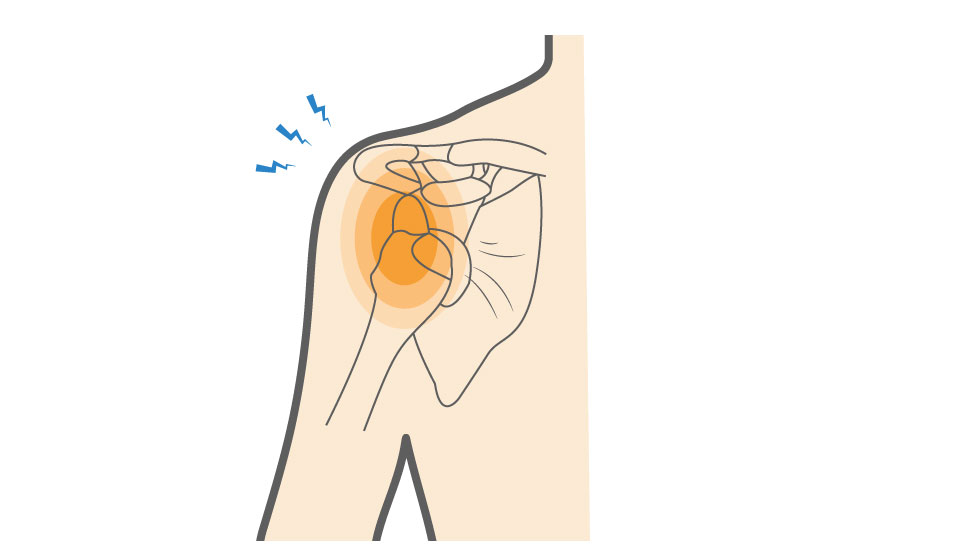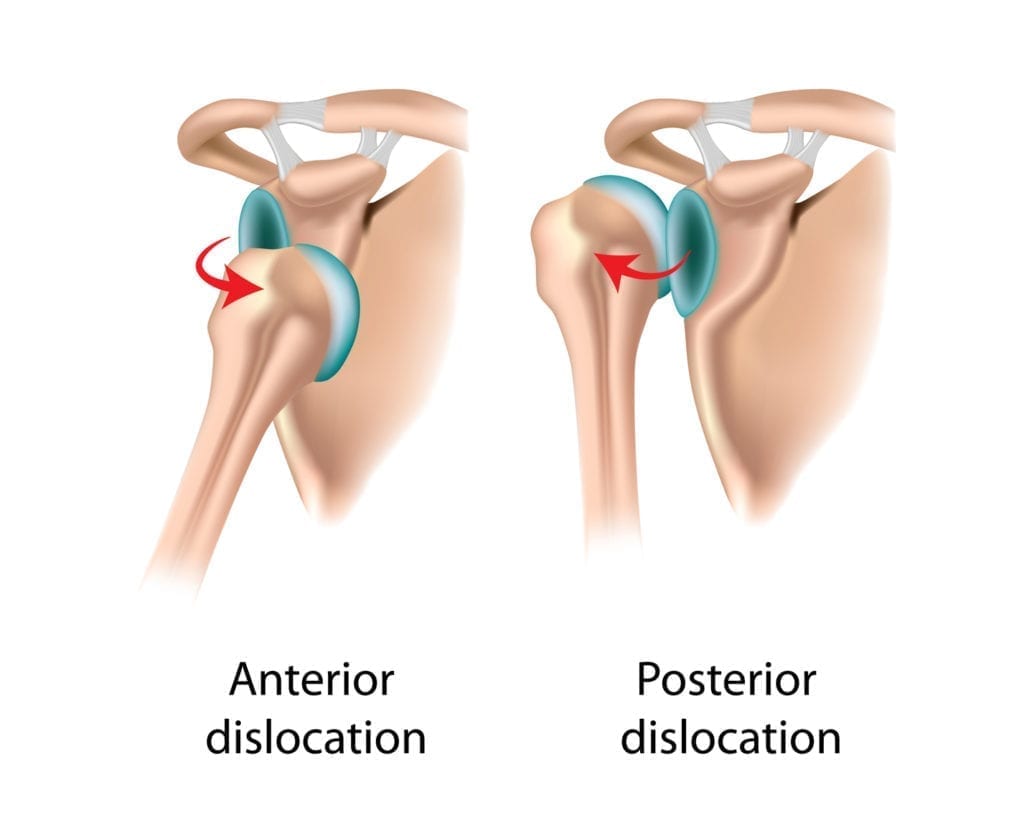Shoulder dislocations occur when the head of the humerus (the long bone of the upper arm) completely leaves the glenoid cavity of the scapula (shoulder blade). Although the shoulder structure allows a greater range of motion for athletic activities, it is also at a higher risk of dislocations. A traumatic shoulder dislocation occurs when the humeral head is out of the socket due to an impact, such as a tackle in football, or a traumatic injury, like a fall. This type of shoulder joint dislocation is common, especially among athletes involved in contact sports.
The shoulder can become dislocated in one of two directions:
- Anteriorly (through the front of the joint)
- Posteriorly (through the back of the joint)
Anterior shoulder locations are much more common than posterior shoulder locations.



